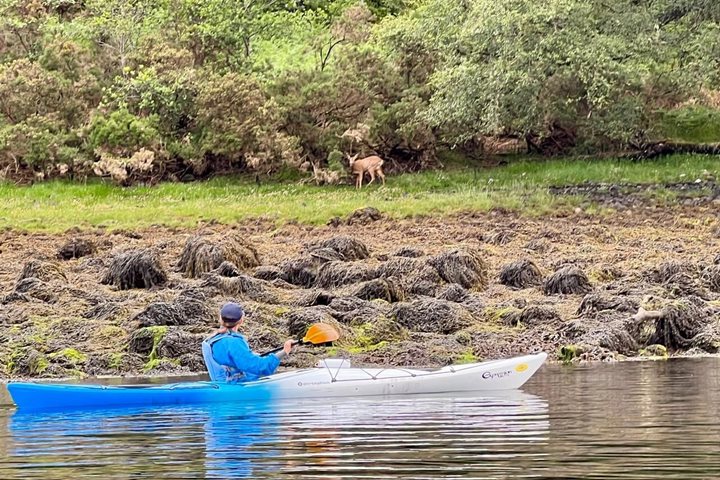Bright sun, warm temperatures, light breeze. In Scotland? Yes! On a rare summer day of heat and endless blue skies, we enjoyed a variety of outings and activities, starting with the Culloden Battlefield.
Culloden is the site of the 1746 battle that ended the campaign of Prince Charles to regain the throne for the Stuart Dynasty. Our historian David summarized the complex history leading up to the battle as we drove to the battlefield, informing us that the war was primarily a conflict between Catholics and Protestants, not between Scotland and England. Prince Charles’ troops were brutally defeated at Culloden and what followed was a suppression of the Highland culture. The Culloden Visitor Centre is an award-winning museum, providing a detailed history of the battle and events leading up to the final conflict.
After Culloden, we went back to prehistoric times with a visit to Clava Cairns, a site of Bronze Age burial cairns and standing stones that was constructed around 2000 to 1500 B.C. Three massive cairns dominate the site, two of them with passages aligned to catch the sun’s rays on the winter solstice.
We returned from Clava Cairns to rejoin the Lord of the Glens which had moved up the Caledonian Canal during the morning. We have now started our journey up the Canal, engineered by Thomas Telford and built between 1803 and 1822 to create an inland route that avoided the long route around the north coast. The route follows the Great Glen’s fault line with its series of natural lochs, and includes 22 miles of manmade canal and 38 miles of open lakes, with a total of 29 locks to pass through. Today, we sailed across Loch Ness, with views of the impressive Urquhart Castle. The Castle is a ruin, blown up in 1692 so that Jacobite rebels couldn’t make use of it, leaving behind picturesque crumbled towers and walls. It is a prime Nessie-spotting place, but no sign of the great monster!
Our next stop was Fort Augustus. This small town was the site of a fort built after the 1715 Jacobite uprising. The town was named for King George II's younger son, Prince William Augustus, the man who later, as Duke of Cumberland, became known as Butcher Cumberland due to his brutality in removing and repressing the Highland population after the 1746 uprising and the government troops victory at Culloden.
On such a sunny day, a few of the more adventurous guests within the group went swimming in Loch Ness. Some of us set off for a walk with David and Robin while others went kayaking with Stewart. The walk took us through hay fields and pastures and through the shade of oak and sycamore woodlands. After a clamber over a stone wall, we entered a cemetery where John Anderson, a friend of the Scottish bard Robert Burns, is buried. David gave a reading of Burns’ poem “John Anderson, My Jo” (1789) next to the grave. The kayakers also had a delightful outing, floating in the serene waters of the sunny afternoon.
Before dinner our bartender Andy gave an informative whisky presentation, describing the creation and variations in this iconic drink. Everyone enjoyed tasting a few wee drams. After dinner, a local cèilidh band entertained us, ending the day on a musical note.







